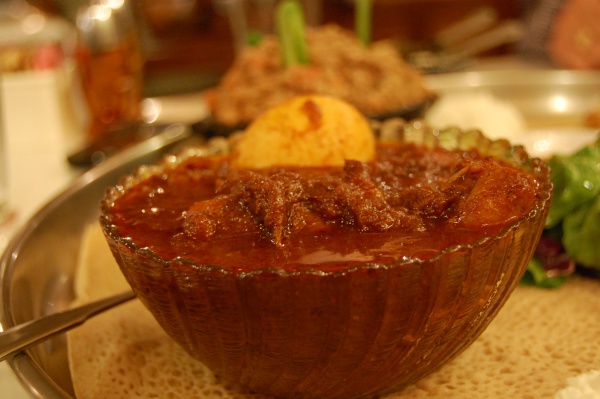Facts About Wat
Wat, sometimes spelled wet’, wot, or tsebhi, is a flavorful stew or curry originating from Ethiopia and Eritrea. This hearty dish can be prepared with various meats, such as chicken, beef, or lamb, and is typically enriched with vegetables and spices, including the fiery berbere spice blend. A key ingredient in wat is niter kibbeh, a seasoned clarified butter that adds depth and richness to the stew.
What sets wat apart is its distinctive cooking method. It begins with slow-cooking onions without any fat until they release most of their moisture. Only then is fat added, along with the other ingredients. This technique helps thicken the stew, as the onions break down and meld with the other components. Wat is usually served with injera, a spongy flatbread made from teff grain, which functions as both a utensil and a delicious accompaniment.
There are several types of wat, each offering its own unique twist. Two popular versions are doro wat and siga wat. Doro wat is made with chicken and often includes hard-boiled eggs, making it a cherished traditional dish in Ethiopia that is frequently enjoyed in communal settings. Siga wat, on the other hand, features beef as its main ingredient.
The Beta Israel community, Ethiopian Jews, have their own version of doro wat called Sanbat Wat or Sabbath Wat. To adhere to dietary laws, they use vegetable oil instead of ghee. They may also use yeqimem zeyet, a type of niter kibbeh made from vegetable oil, to add that distinctive flavor to the dish.
Whether it's the communal enjoyment of doro wat or the rich, spicy flavors of siga wat, this traditional stew offers a taste of Ethiopian and Eritrean culture that is both unique and deeply satisfying.

 Djibouti
Djibouti